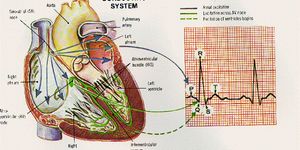Cardiologists can now estimate your risk of dying in the next 10 years based solely on how well you keep moving on an accelerating treadmill.
Several exercise-based risk scoring systems already measure short-term risk of dying, but those systems are designed for patients with established heart disease or overt signs of cardiovascular trouble. They also factor in additional tests, including electrocardiograms.

By contrast, the new algorithm-dubbed the FIT Treadmill Score-gauges long-term death risk in anyone based only on treadmill exercise performance.
FIT score
"The notion that being in good physical shape portends lower death risk is by no means new," says lead investigator Haitham Ahmed, a cardiology fellow at Johns Hopkins University School of Medicine.
"But we wanted to quantify that risk precisely by age, gender, and fitness level, and do so with an elegantly simple equation that requires no additional fancy testing beyond the standard stress test."
The FIT score could yield valuable clues about patients' health if calculated for the millions who undergo cardiac stress testing in the United States each year, researchers say.
"The FIT Treadmill Score is easy to calculate and costs nothing beyond the cost of the treadmill test itself," says senior study author Michael Blaha, director of clinical research at the Ciccarone Center for the Prevention of Heart Disease.
"We hope the score will become a mainstay in cardiologists' and primary clinicians' offices as a meaningful way to illustrate risk among those who undergo cardiac stress testing and propel people with poor results to become more physically active."
Exercise stress tests
Exercise stress tests are commonly used now to determine who needs invasive cardiac testing and to inform treatment decisions. They measure how well the heart and lungs respond to physical exertion while a person is walking on a treadmill at progressively higher speeds and inclines.
The test is stopped once a person reaches the point of exhaustion or develops chest pain, dizziness, or heart rhythm abnormalities.
Those who have abnormal electrocardiogram tracings during exercise or who develop symptoms suggestive of abnormal heart strain during the test are referred for an angiography, an invasive procedure to examine the interior of the heart's main blood vessels.
Those with normal EKG readings and no alarming symptoms while exercising are said to have "normal" results and typically do not get further testing.
A spectrum disorder
However, the new study, published in the journal Mayo Clinic Proceedings, shows there are varying degrees of fitness among those with "normal" stress test results. That data reveals telling clues about overall death risk over time.
"Stress test results are currently interpreted as ‘either/or' but we know that heart disease is a spectrum disorder," Ahmed says. "We believe that our FIT score reflects the complex nature of cardiovascular health and can offer important insights to both clinicians and patients."
The researchers analyzed information on 58,020 people from Detroit, ages 18 to 96, who had standard exercise stress tests between 1991 and 2009 for evaluation of chest pain, shortness of breath, fainting, or dizziness.
The researchers tracked how many of the participants within each fitness level died from any cause over the next decade. Among people of the same age and gender, fitness level and peak heart rate were the greatest indicators of death risk.
Source: Futurity.org









